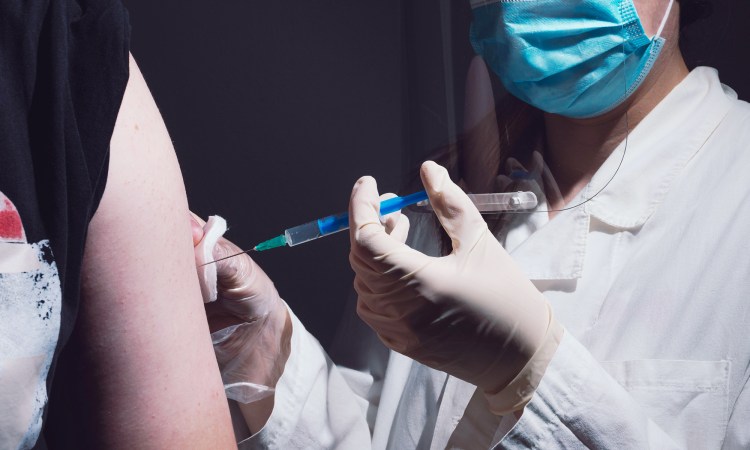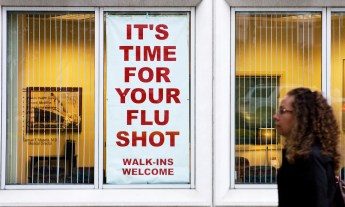
Hello, I’m Emily Oster and I’m an economics professor at Brown University. Much of my professional life is spent explaining data and decisions to a wider audience, so when the pandemic began, I became interested in helping people better understand how COVID-19 worked. I founded the COVID-Explained project, a group of researchers and students who focus on explaining the science behind COVID-19 and assisting people in navigating the decisions which, frankly, they never thought they’d have to make.
Since the site launched, we’ve received emails from people all over the world. Most recently, our inbox has been full of questions about the vaccines: “Would you get it?” “Should I get it?” “When can we get it?” “What about our kids?” etc. Here are some answers that I’ve collated, drawing on the expertise of some of the COVID-Explained team.
So far, two vaccines have applied for Emergency Use Authorization (EUA) approval in the US, one from Pfizer/BioNTech and one from Moderna, and the Pfizer vaccine vaccine began being given to people in the US yesterday (and in Canada; it started to be administered in the UK last week). Both vaccines have shown very high effectiveness — well over 90% — in clinical trials consisting of thousands of participants, and with limited negative effects. While other vaccines are on the horizon, these answers pertain to the Pfizer and Moderna vaccines since those will be available first.
Q: These vaccines have gotten made in record time. Does that mean the pharmaceutical companies have skipped steps in the process or cut corners somewhere?
A: Basically, no. A big piece of why vaccines are slow is that development takes money, but there’s been a lot of money invested here, both by the government and by the pharmaceutical industry. In general, regulators can be slow to get vaccines on the calendar to approve — not so here. Researchers have also been able to build on existing work done on these types of vaccines, and last but not least, vaccines are easier to test when there is more disease — due to the COVID-19 surge in the US, more trial participants were exposed to it. There have also been concerns that the vaccine trials may have left out people from marginalized groups. This is too often true and it would be a big concern in the case of COVID-19, where mortality has been highest amongst people of color. However, the investigators running the vaccine trials have made an extra effort to include people from these groups, and the good news is that efficacy seems to be really high for all participants.
Q: I’ve heard these are mRNA vaccines? What does that mean? How do they work?
A: Yes, the Pfizer and Moderna vaccines are both mRNA vaccines. That’s a new type of vaccine, and there is understandable wariness about it. That said, both vaccines went through extremely large trials — more than 40,000 participants for Pfizer and more than 30,000 for Moderna — and have shown extremely good safety data. There is a lot of reason to be optimistic and to trust these vaccines, but it can be hard to trust something you don’t understand well.
In your cells, you have double stranded DNA that serves as the instructions for everything your body does. When you want to use a specific set of instructions, your cells briefly unwind the DNA double strands to copy one strand into a single-stranded copy called messenger RNA, or mRNA. It serves as a “messenger” by bringing this copy of instructions to the parts of your cell (called ribosomes) that serve as protein factories, where these instructions are translated and made into proteins.
mRNA vaccines work by inserting an mRNA molecule into your body, which your cells read as instructions to produce certain viral proteins (specifically, the SARS-COV-2 spike protein). Your immune cells then recognize this viral protein because it’s foreign — your human DNA doesn’t contain instructions on how to make this protein and it’s never been made in your body before.
When your immune cells recognize this viral protein, they make antibodies against it. So those antibodies are, effectively, antibodies against the SARS-COV-2 virus. Then, if the actual virus is introduced to your body, the antibodies recognize the spike protein and destroy it. mRNA does not change your DNA. It survives in your cells for a very short period of time — usually a few hours.
Here’s an analogy that might help, from my COVID-explained collaborator Ashley Battenberg. Think of your DNA as a recipe book and the mRNA as a quickly disintegrating recipe card, which lasts only a few hours. This recipe card isn’t able to jump into a recipe book that you’ve stored in a closed cupboard in your kitchen. It’s written on a different type of paper, it’s in a different part of your kitchen, and recipe cards can’t just jump into and merge with a recipe book. Even if you put it inside the recipe book, you would never confuse it with a page in your recipe book. Yes, they’re both instructions but they are clearly different things, just as DNA and mRNA are different things. The mRNA does not change your DNA. It just can’t.
Q: Will I get the virus from the vaccine?
A: No. Many traditional vaccines use a killed or weakened form of a virus to prompt an antibody response. However, mRNA vaccines don’t work like this. They do not contain the virus. The mRNA contains only the instructions to make one specific protein (the spike protein). SARS-CoV-2 is made up of many proteins that allow it to infect us, and it is simply not possible for the spike protein alone to infect and replicate in our cells (which is what happens when we are “infected” with a virus).
It is possible, even common, to have side effects after the vaccine. But these are due to the reaction of your immune system and not an infection. While there is no virus replicating in your cells (no infection), your immune system is triggered to respond as if there is. For this reason, many of the symptoms that you experience after a vaccine might be similar to the symptoms that one would experience upon infection. These symptoms are a sign that your body is building up immunity.
Q: What kind of side effects have researchers been seeing?
A: Relative to other vaccines, patients are experiencing more significant side effects, although they are in line with typical side effects from vaccines. To quote from Science Magazine:
The independent board that conducted the interim analysis of Moderna’s huge trial found that severe side effects included fatigue in 9.7% of participants, muscle pain in 8.9%, joint pain in 5.2%, and headache in 4.5%. For the Pfizer vaccine, the numbers were lower: Severe side effects included fatigue (3.8%) and headache (2%).
These side effects seem to vary by age, with younger people having worse side effects. The age variation is good news: older individuals who get more value from the vaccine are also less likely to have serious side effects. Anecdotally, a friend in their 30s has described the side effects as “feeling like a wicked hangover” — not pleasant but still manageable.
On the one hand, there will be probably a desire to minimize the existence of side effects to encourage vaccination, but in my view, realism is important here. It seems like the side effects are relatively worse than usual vaccines, but they appear to last for only a brief time. (Editor’s note: Click here to read about allergic reactions associated with the Pfizer vaccine.)
Q: What about pregnant women and kids — can they get the vaccine?
A: Both pregnant women and children were excluded from vaccine trials (by “kids”, I’m referring to people who are less than 16 years old). They may need to wait for safety data, but this could be gathered in the next few months as we start vaccination in general.
Q: Why do I have to get two shots? And how long will my immunity last?
A: You need to get two shots in order to receive full protection, although the early data suggest that some partial protection — roughly 50 percent — is delivered by the first shot. The two shots are spaced either three weeks (for the Pfizer vaccine) or four weeks apart (for the Moderna vaccine). We’ll need to wait to find out how long immunity will last — scientists don’t yet know the answer.
Q: So will these vaccines bring about an end to this pandemic?
A: Yes … eventually. But the pandemic will end slowly. In drips. We will not wake up one morning to find large indoor singing events back on everywhere, nor we will find ourselves all burning our masks in a bonfire on the first day of vaccination. Part of this is because vaccination will not be immediate. Some Americans working in healthcare are beginning to receive their shots, but widespread vaccination will take time, and kids will be later. It’s believed that we need 70 percent or 80 percent of people vaccinated to achieve some kind of herd immunity that can slow the spread of the disease, and that definitely won’t be reached in January or February. So we need to be patient, wear masks, keep our precautions up for a little while longer.
This post was originally published at ParentData, Emily Oster’s newsletter which offers data-based guidance for families. Go here to sign up for it.
Watch Emily Oster’s The Way We Work video — part of a TED original series — here:












